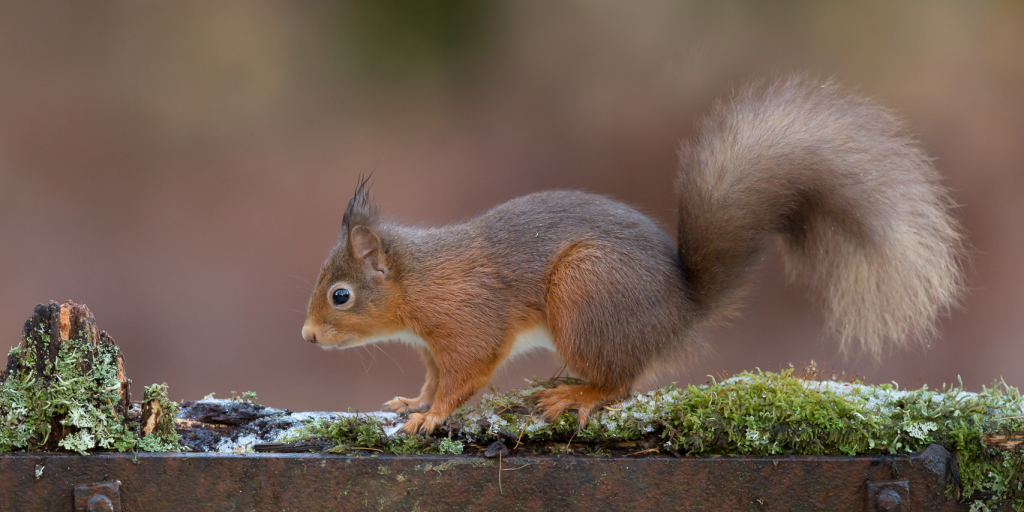Tayside
Successfully defending the Highland Boundary Line to protect north Scotland’s red squirrels through strategic control and monitoring
Tayside continues to provide a home for many of Scotland’s red squirrels. However, since the 1980s grey squirrels have spread north from Perth and the Central Belt. Unfortunately, these grey squirrels not only out-compete reds, some also carry the deadly squirrelpox virus. As a result, red squirrels have slowly disappeared from some areas.
Tayside is on the forefront of red squirrel protection in Scotland. Without action, grey squirrels could continue to spread northwards, threatening the healthy red squirrels of the Scottish Highlands. Furthermore, if these grey squirrels were able to connect with the ‘island’ population in Aberdeen, which does not currently carry squirrelpox, the effects could be devastating.
With the help of control staff, landowners and local volunteers, Saving Scotland’s Red Squirrels has started to reverse the trend of decline in Tayside through targeted, landscape-scale control and monitoring work.
The project is also working with scientists from Heriot-Watt University, the University of Edinburgh’s Royal (Dick) School of Veterinary Studies, and others to monitoring the transmission of squirrelpox northwards from South Scotland. With support from volunteers across the Central Lowlands, the project carries out annual squirrelpox testing as part of a national scheme to detect any spread in the disease. It is hoped that this ongoing monitoring, informed by mathematical modelling conducted by Heriot-Watt University, will help us prevent squirrelpox from crossing northwards over the Highland Line into red-only areas.
Achievements to date
Halting the spread of grey squirrels – Through concerted project efforts, we have seen no further spread of grey squirrels into the Highlands in recent years. Unfortunately grey squirrels will still continue to incur northwards along high-risk dispersal routes in areas such as eastern Angus towards the border with Aberdeenshire, and northwards along the Tay and Tummel, so there is still a lot of work to do to fully protect red squirrels in the region.
Red squirrel recovery – Analysis of trapping results has shown both a decline in grey squirrel numbers in many parts of the region (to almost zero in some places) and the beginnings of a recovery in red squirrel populations in many areas.
Landowner support – We are helping home and landowners to control grey squirrels on their own and voluntarily support the project’s landscape efforts through our trap-loan scheme. We also support landowners to access Scottish Rural Development Programme funding to support grey squirrel control.
Volunteer support – We are currently expanding our network of volunteers to help us monitor key incursion routes and track changes in red and grey squirrel numbers in key areas across Tayside, as well as measure the impact our work is having in the region. Other volunteers are supporting vital control work through our trap-loan scheme.
Squirrelpox testing – Since 2012 we have carried out annual blood-sampling of grey squirrels across the Central Lowlands to test for squirrelpox antibodies, as part of a national squirrelpox monitoring scheme designed to detect any spread in the disease.
How you can help
- Help us monitor the situation in Tayside by submitting a squirrel sighting to our website
- Take action for red squirrels by joining our trap-loan scheme
- Get involved in citizen science by joining our growing network of monitoring volunteers
- Help protect red squirrels in your local community by signing-up as a volunteer dispatcher
- Help prevent the spread of squirrelpox by cleaning your garden feeders regularly with anti-viral solution or get involved with our annual squirrelpox testing efforts
- Send any found dead red squirrels for post mortem to the Royal (Dick) School of Veterinary Studies. Inform your closest member of SSRS staff that you have done so
Volunteering with Saving Scotland’s Red Squirrels is a fantastic way to connect with nature and support your local area’s special native wildlife. Our volunteers are provided with the training and resources they need to participate. If you are interested in volunteering with the project in Tayside, please contact your local SSRS staff for more information.
Landowners
Landowners in certain areas can control grey squirrels under Forestry Grant Scheme funding, or join the project’s trap-loan scheme. Woodland owners, meanwhile, can adjust the management of their woods to benefit red squirrels. Please contact your local SSRS or Scottish Forestry staff for more information.
Area Contact
Susie McNaughton
Conservation Officer
smcnaughton@scottishwildlifetrust.org.uk
Peter Harrison
Conservation Officer
pharrison@scottishwildlifetrust.org.uk

